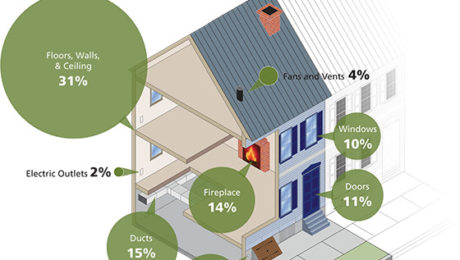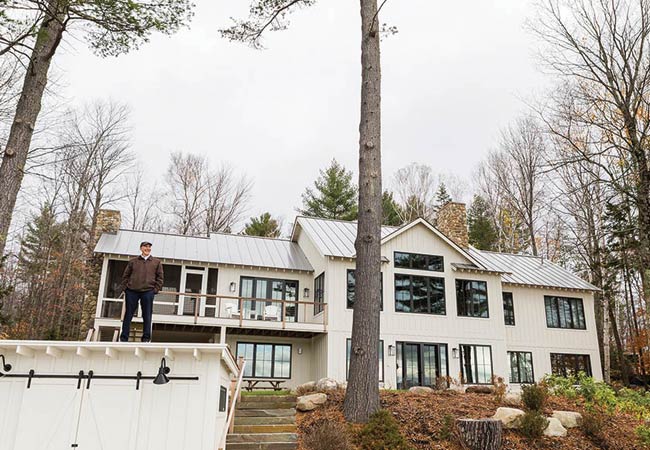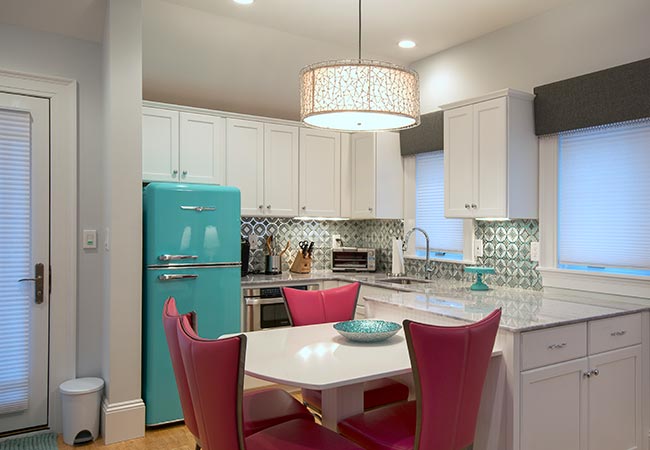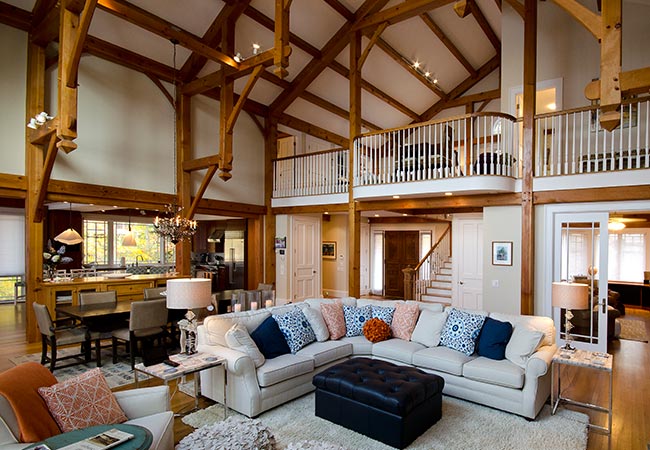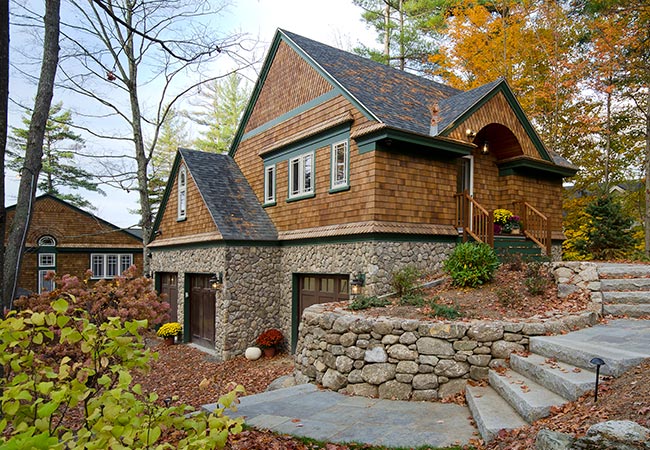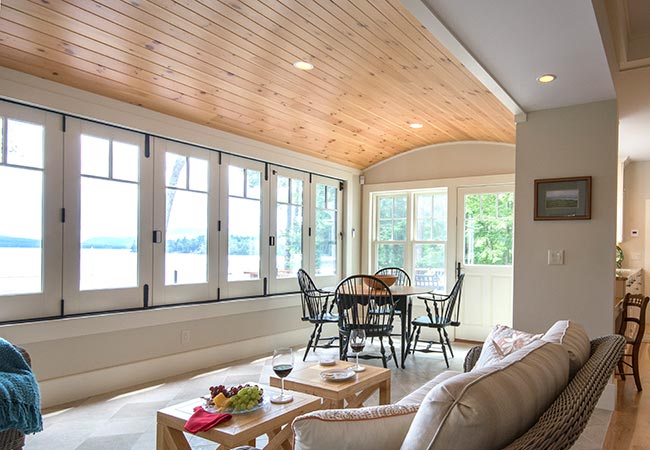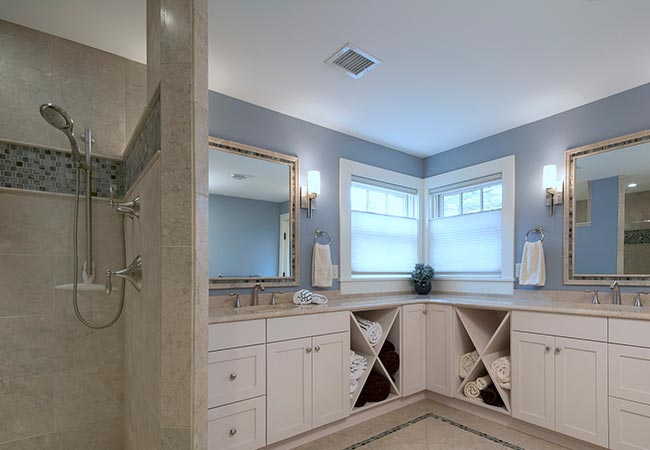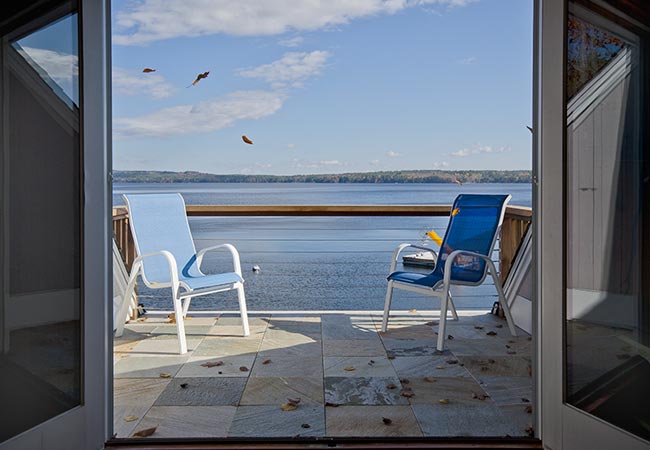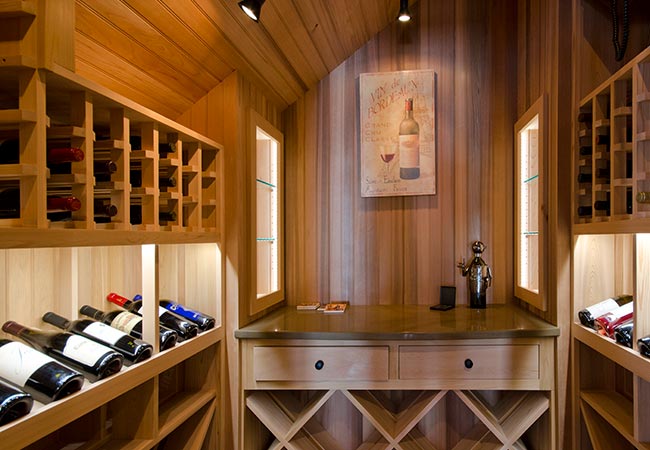What is the first rule of construction that every homeowner knows? “We need to get three competitive bids.”
Most homeowners are not well educated in the homebuilding or remodeling process and may only do one or two such projects in their entire lifetime. Often they make a poor choice in selecting a contractor when it is based on price alone. The assumption with competitive bidding is that the plans and specifications are so clear and unambiguous that any randomly selected, reasonably competent contractor will be able to do the job exactly as envisioned. While more and more clients are aware that they can’t just hire the lowest bidder, few do a lot of research about which contractors to ask for proposals beyond getting some referrals or references from friends, Realtors or architects.
Some homeowners rationalize that any bids that are over their budget are not due to different interpretations of the plans and specs – which are, after all, perfectly clear – but are the result of sloppy estimating, high overhead or huge profit margins. The fact is that the more thought and research that goes into a bid, the higher it becomes. When checking an estimate, contractors more often find omissions rather than waste and inefficiency that can be taken out. The irony is that estimates that are carelessly prepared tend to be more reasonable (lower) and those that are thoughtfully and carefully researched tend to be less reasonable (higher). Guess which one will result in a better project?
Unfortunately, homeowners often have unrealistic expectations of what their project is really going to cost and in my experience sometimes underestimate the actual final cost by as much as half! This expectation is often set up by the designer and even the contractors themselves with off the cuff and faulty upfront “ball-park” estimates.
There is no such thing as “apples-to-apples” competitive bidding. First, I have never seen 100% completely prepared plans and specifications that are not wide open to interpretation and substitution of products, techniques and materials. Most sets of construction documents that have been given to me over the years are no more than 80% complete and I’m being kind. As a competitive bidder, the understandable tendency would be to use the least expensive products and processes possible to return the lowest bid. Second, every builder and remodeler brings a different set of professional skills to the process, and analyzes a project and its associated costs differently. The differences can be subtle, but they exist and result in an unequal playing field creating confusion and misunderstanding. The competitive bidding process reduces each builder to a number rather than considering his or her skills, professionalism, personality and ability to complete the project on schedule and within budget. The competitive bid process is like dangling a project in front of three or four contractors to see who is the most desperate to get it.
As the housing industry continues to become more sophisticated, the level of professionalism among builders and remodelers continues to reach new heights. Many of the best contractors are now refusing to bid competitively, opting instead for a different approach; the negotiated contract. In this scenario, a homebuilder is selected based on his or her abilities and personality, and how they fit with the client and their project. These are critical considerations considering how closely the builder and client will need to interact with each other during a fairly long and involved construction process. Savvy clients, those that have been through the homebuilding or remodeling process more than once, will usually spend much more time to find a contractor, interviewing as many contractors as it takes to find one that they are really comfortable with.
The clients will then engage the contractor much earlier in the process and negotiate a contract with them. The negotiated contract also takes the guesswork out of the project cost. The owner’s budget is shared upfront with each of the builders being considered based on what the owner can afford not what the builder and his subcontractors think (or guess) it will cost. Sharing the budget not only removes assumptions based on cost alone, it builds trust and enables better communication about what actual costs will be. If necessary (and it usually is) choices can be made to realign the project scope with the amount that the owners are comfortable investing in their project. That’s the negotiated part!
A huge benefit of this process is that the contractor is brought in much earlier and not after the entire design and specifications have been completed. This allows the contractor to review the plans early on and suggest changes that might help to avoid budget and schedule issues. A complete team of architect or designer, owner and contractor makes for a much more efficient process and a successful outcome. The project becomes a collaborative effort, not a competitive one, and saves time, money and ensures a better project. Make no mistake, owners that choose the negotiated contract method don’t always get the ”lowest price”, but they always get the best value and really benefit from the contractor’s full attention throughout the entire process. By sidestepping the bidding process, the contractor is able to spend his or her time exclusively on activities that will be of real service to the owner.
As homebuilding and renovation continue to evolve with ever higher levels of sophistication and professionalism, new and more effective business models are needed. The negotiated contract model has many advantages over the old “low bid” rule and will benefit homeowners in this new era of construction.
By Everett Pollard
Owner of Northcape Design/Build in Sunapee, NH.
Guest Post By Robert Knight, AIA
[Edited text of article which appeared in Fine HomeBuilding]
I am a residential architect, and almost every potential client that walks in the door wants to know “How much per square foot does it cost to build around here.” For many years I had a casual, commonly accepted number for that question. Then about 15 years ago, after a spate of inflation I found out I was suddenly off by about 25%, so I set out to get more scientific about tracking what our houses cost.
In trying to systematize our price data it became apparent I needed to have a systematic way to compare buildings with different components in order to get a universal kind of square footage. Unfortunately, having this universal square foot number doesn’t by itself solve problems when talking to clients because they have run into many different descriptions of square feet – with no disclaimers attached. Generally, people selling houses want them to seem big so the 25’X40’ sq. ft. screen porch might well be counted as 1000 sq.ft. of living space in the Realtor’s description. On the other hand when someone has been told that it cost’s “$200/sq.ft. to build a house” they want the number of square feet to be as small as possible so the estimated cost is less—and then they multiply only by the interior “heated” sq.ft and get that screen porch for free.
Of course reality lies in between. The screen porch isn’t free, but it doesn’t cost as much as heated finished space. To get an universal “square foot” we have developed a series of fractional multipliers that we use to get what we call “factored square feet” (see spreadsheet ). We start with the Gross Heated square feet. This is a reasonably accepted industry standard. The floor area measured to the outside of the rough walls–as the building is dimensioned. We get this for all finished floors and total it separately, because this number by itself has other uses–for solar calculations, bank appraisals, real estate questions etc. This is Total Gross Heated Space, and it is definitely what a lot of people think of as “The square footage of the house”–but it is just the beginning.
Two story spaces we calculate and multiply by 0.5. It is an industry standard that cathedral ceilings are 1.5 times spaces with flat ceilings, (remember we have already gotten the basic floor space in our “Gross heated space” so this 0.5 is adding to that). Does it really increase the cost of a room 50% to have a cathedral ceiling? If that ceiling has open beams and lots of skylights and balconies overlooking it, it may be more than that. If it is simply a cathedral ceiling, probably not–but this is an empirical way of comparing dissimilar buildings so some simplification of reality is called for. In my experience, micro adjusting these multipliers is not wise, because it implies a level of precision that this methodology doesn’t have. This is good for a first look. When you want to know what it will really cost, spend the time and “stick it out”.
What of the other spaces???
Full basements: We usually add 10% for them. Why not more? In Maine if we use frost walls they are probably 5’ deep anyway, and we always put a “rat slab” in the crawl space, so going to 8’ doesn’t add that much. Multiplier = 0.10.
Attics: If they are really unfinished space under the roof eves with only a plywood subfloor we usually take them at 20%. If its just trussed space we see it as part of the roof and add nothing. Incidentally I usually don’t count space under the eves behind knee walls that are under 4’ high at all in my floor calculations, so adding 20% for a real attic (which is probably more than it costs) tends to compensate for throwing away that square footage. Multiplier =0.20.
Insulated Garage: We think is about 40% of the cost of heated house space. They usually have a good deal of mechanical stuff in them, good windows, expensive doors, a shop work bench, maybe a stair up to a second floor “attic”, but they are inherently simple spaces.
Multiplier = 0.40.
Uninsulated or “Raw” garage: We usually use 30%. Because there is less of the above reasons. Multiplier =0.30.
Covered decks, screen porches, and roof decks over inhabited spaces we take at 40% because they involve lots of expensive finishes and detailing. Multiplier =0.40.
Open wood decks we figure at 20%. We find a deck with PT framing and WRC surface, some stairs, railings; some built in seating goes currently for around $38/sq.ft. which is about 20% of heated space at $200 sq.ft. But, you think, what if the house is a luxury model at $300 a foot, the deck won’t increase to $60 sq.ft. Won’t it? Won’t it in fact be a granite patio or be made out of South American Ipe on that level of house? If it truly won’t, then reduce the multiplier–but don’t say I didn’t warn you. The point of this is that the multipliers should reflect the kinds of buildings that you build so that the “Factored sq.ft. number” that you come up with for your buildings will allow you to compare dissimilar buildings.
When we develop a square foot sheet for a house that is at all atypical we often times will adjust the multipliers to be what we feel is a more accurate reflection of this particular building–but they rarely change more than .10 up or down. The important thing is to go through the exercise, and to realize this is only a first look at a building–before you really have enough information to truly cost it out.
Our clients often want to massage these numbers. I resist this, because the only way they get massaged is downward. If a 1000 sq.ft. 2 story space is multiplied times 0.5 it adds 500 “factored sq. ft.” to the house square footage. If that is multiplied times a sq.ft. cost of $300/sq.ft it amounts to $150,000.00. Surely it doesn’t add this much to the cost. It probably doesn’t, but other areas might add more and if we only reduce the areas that seem too high we will end up with a very optimistic estimate. When we resist our clients efforts to massage this spreadsheet it has proven to be a pretty good predictor of building costs.
(Note: Northcape Design/Build has adapted Robert Knight’s system with his permission for our own “Estimated Project Budget Range”. This system provides budget guidance for our customers in the very beginning phases of each project using comparisons from similar projects that we have completed.)
No — it’s a huge deal! Our customers often look confused when we address their insulation questions by bringing up air barriers and air leakage. I mean, “Why are you talking about air leaks when I asked about the insulation?” But controlling air leakage is profoundly important for anyone interested in saving money, saving energy, and improving comfort, especially in houses insulated with fiberglass – which means, you know, almost all of them.
The concept of air sealing ties in with how insulation works and how heat moves. Thermal energy moves in three different ways: by conduction, convection and radiation. Conduction is heat transfer between two solids, such as what happens why you burn your hand on a hot pan handle. Radiation is the infrared radiation that warms on contact; think of the sun beating down on your skin. Convection, the heat transfer mode that we’re interested in, is heat movement in a fluid medium like air and water.
There’s a building science concept known as the stack effect, a phenomenon which is well known in the industry and not at all outside of it. Simply put, the stack effect is convective heat movement at work. Warm air is more buoyant than cool air, so it naturally floats upward through your house. When the outdoor temperature is colder than the indoor temperature, the warm updraft grows stronger. This updraft creates a slight but definite positive air pressure near the upper levels of your house, forcing air to escape from every nook, crack, and hole it can find.
This air convection moves heat out of the top of your house, and as an added bonus, creates a slight suction (negative pressure) in the lower part of your house. For every cubic foot of warm air escaping from the top, a cubic foot of chilly winter air seeps in the bottom. (I mean, if you live in Maine.
Fiberglass insulation does not help! The air permeability of fiberglass insulation compounds this problem — or at least does absolutely nothing to stop it. Most homeowners think, “Hey I have two feet of pink fluffy stuff up there. That’ll handle it.” Fiberglass slows conductive and radiant heat flows, but not convective heat loss. It may not be as bad as an open window, but it is closer than you’d care to think. And I’ve seen a few hundred blower-door tests to back this statement up.
Warm air is flowing out the top of your house, and cold air is sneaking in at the bottom. Pop quiz, hot shot: what do you do? Seal the leaks!! Air sealing is the answer here. In the attic, sealing around chimney chases, plumbing chases, recessed lights, framing seams … really, everywhere. In the basement, sealing the sills, oil supply pipes, bulkhead doors, and other penetrations.
The majority of new homes are insulated with fiberglass and most builders pay absolutely no attention to air flow and air leakage. This is something that new building codes are working to rectify. Fiberglass insulation stops air flow not at all — yet air leaks are often the single largest source of heat loss.
Comfort is also a major factor. It’s a rare homeowner who has ever thought they were uncomfortable because of poorly insulated walls. Leaky windows or drafty rooms … another matter entirely. Air sealing homes is one of the most cost-effective ways to save money and feel more comfortable in your home.
This was adapted from an article by Erik North, the owner of Free Energy Maine, is an energy auditor and home performance specialist in Westbrook, Maine. He is also the author of the Energy Auditing Blog.











